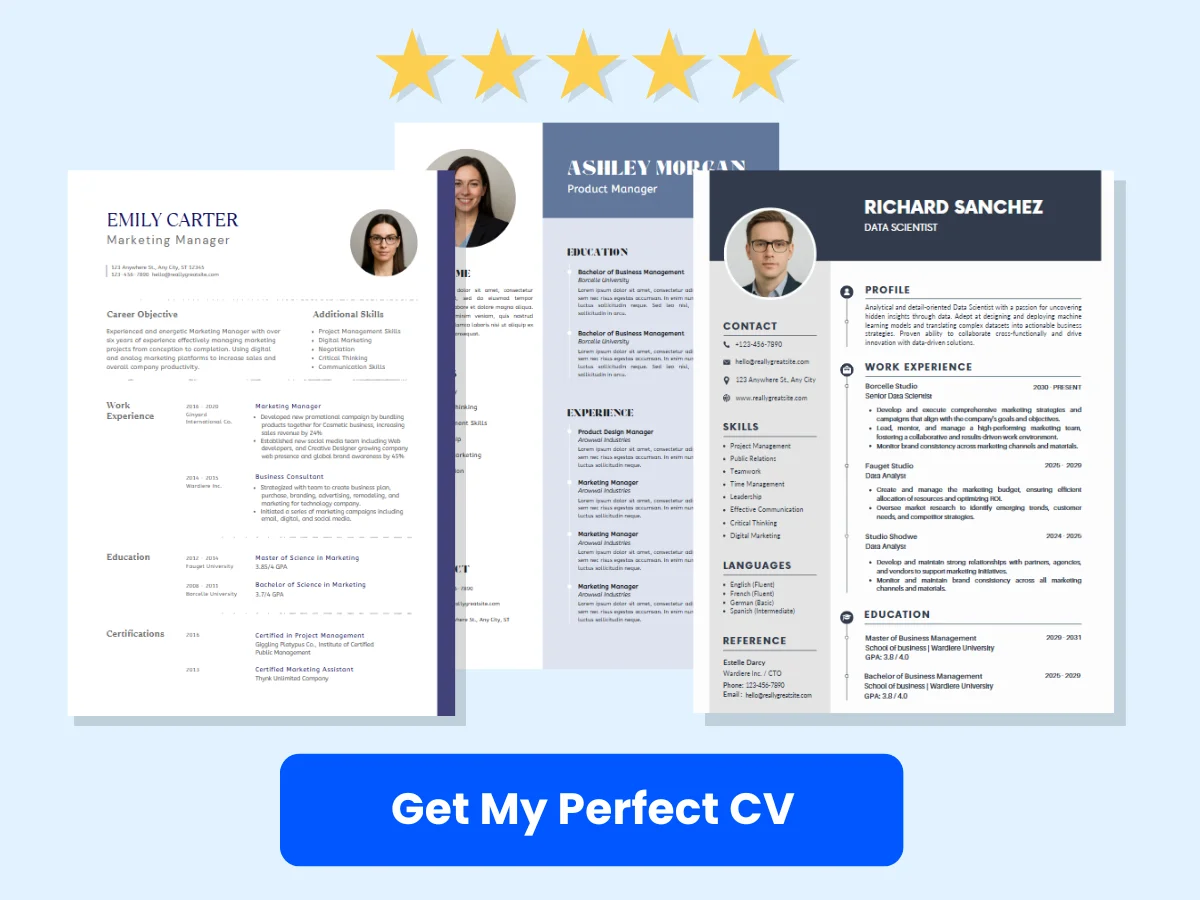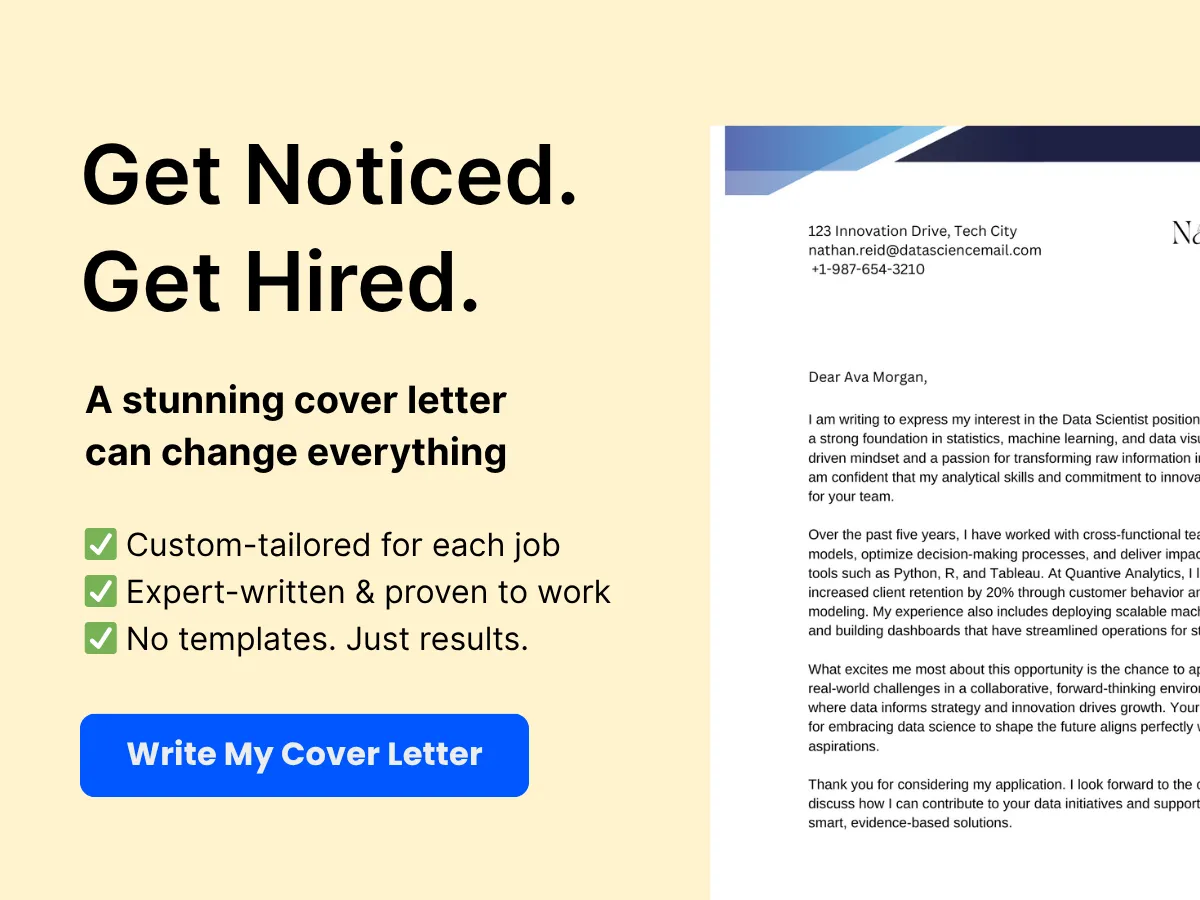In a world that often emphasizes accolades and milestones, defining your greatest achievement can be a profound and personal journey. Whether you’re preparing for a job interview, crafting a personal statement, or simply reflecting on your life’s journey, articulating your most significant accomplishment is crucial. It not only showcases your skills and resilience but also reveals your values and aspirations.
This expert interview guide is designed to help you navigate the process of identifying and articulating your greatest achievement. Through insightful questions and practical tips, you will learn how to reflect on your experiences, draw connections between your achievements and your personal growth, and present your story in a compelling way. By the end of this article, you will be equipped with the tools to confidently define and communicate what truly matters to you, setting the stage for future success and self-discovery.
Exploring the Concept of ‘Greatest Achievement’
What Constitutes a ‘Greatest Achievement’?
Defining your greatest achievement is a deeply personal endeavor that varies significantly from one individual to another. At its core, a ‘greatest achievement’ is an accomplishment that holds significant meaning to you, often reflecting your values, aspirations, and the effort you invested to reach that milestone. It can be a moment of triumph that showcases your skills, resilience, and determination, or it can be a quiet victory that resonates deeply within your personal narrative.
To better understand what constitutes a greatest achievement, consider the following elements:
- Impact: An achievement often has a lasting impact on your life or the lives of others. For instance, completing a marathon may not only signify personal endurance but also inspire others to pursue their fitness goals.
- Effort: The level of effort and dedication required to achieve a goal plays a crucial role. An achievement that demands significant sacrifice or hard work tends to be more meaningful. For example, earning a degree while working full-time showcases commitment and perseverance.
- Personal Growth: Achievements that contribute to your personal development or self-discovery are often viewed as the most significant. Overcoming a fear, learning a new skill, or transforming a weakness into a strength can be profound achievements.
- Alignment with Values: When an achievement aligns with your core values or beliefs, it becomes more than just a milestone; it becomes a reflection of who you are. For instance, volunteering for a cause you are passionate about can be a powerful achievement that embodies your commitment to making a difference.
Differentiating Between Personal and Professional Achievements
When exploring the concept of greatest achievements, it is essential to differentiate between personal and professional accomplishments. Both categories are valid and can hold significant meaning, but they often serve different purposes in our lives.


Personal Achievements
Personal achievements are milestones that reflect individual growth, relationships, and life experiences. They often revolve around personal goals, values, and aspirations. Examples of personal achievements include:
- Overcoming Adversity: Successfully navigating a challenging life event, such as recovering from an illness or overcoming a personal struggle, can be a profound achievement that shapes your character.
- Building Relationships: Cultivating meaningful relationships, whether through family, friendships, or community involvement, can be a significant personal achievement. The ability to connect with others and foster a supportive network is invaluable.
- Personal Development: Engaging in self-improvement activities, such as learning a new language, mastering a musical instrument, or developing a new hobby, can be fulfilling achievements that enhance your quality of life.
Professional Achievements
On the other hand, professional achievements are accomplishments that occur within the context of your career or work life. These achievements often reflect your skills, expertise, and contributions to your field. Examples include:
- Career Advancement: Receiving a promotion, earning a raise, or being recognized with an award can signify professional success and validation of your hard work.
- Project Completion: Successfully leading a project from inception to completion, especially one that has a significant impact on your organization, can be a noteworthy professional achievement.
- Skill Mastery: Gaining expertise in a specific area, such as becoming a certified professional in your field, can enhance your career prospects and demonstrate your commitment to continuous learning.
While personal and professional achievements can be distinct, they often intersect. For example, a professional achievement may lead to personal growth, and vice versa. Recognizing the interplay between these two categories can provide a more holistic view of your accomplishments.
The Role of Context in Defining Achievements
The context in which an achievement occurs plays a crucial role in how it is perceived and valued. Context can include various factors such as cultural background, personal circumstances, and societal expectations. Understanding these elements can help you articulate your greatest achievement more effectively.
Cultural Context
Cultural norms and values can significantly influence what is considered an achievement. In some cultures, academic success may be highly valued, while in others, community service or family-oriented accomplishments may take precedence. For instance, in collectivist cultures, achievements that benefit the community or family may be celebrated more than individual accomplishments. Recognizing the cultural context of your achievements can help you appreciate their significance and communicate them more effectively to others.
Personal Circumstances
Your personal circumstances at the time of an achievement can also shape its meaning. For example, if you completed a significant project at work while managing a personal crisis, the achievement may hold even greater weight due to the challenges you faced. Similarly, achieving a personal goal after overcoming obstacles, such as financial difficulties or health issues, can enhance the value of that accomplishment. Reflecting on the circumstances surrounding your achievements can provide deeper insights into their significance.


Societal Expectations
Societal expectations can also influence how achievements are perceived. In a competitive job market, professional achievements may be prioritized, while in other contexts, personal achievements may be celebrated more. Understanding the societal lens through which your achievements are viewed can help you navigate conversations about them, especially in professional settings like interviews or networking events.
Examples of Defining Your Greatest Achievement
To illustrate the process of defining your greatest achievement, consider the following examples:
Example 1: A Personal Achievement
Imagine someone who has struggled with anxiety for years. After years of therapy and self-reflection, they finally manage to speak in public without feeling overwhelmed. This achievement is significant not only because it demonstrates personal growth but also because it reflects their commitment to overcoming a challenge that has affected their life. In this case, the achievement is defined by the effort, impact, and personal significance it holds.
Example 2: A Professional Achievement
Consider a project manager who successfully leads a team to complete a high-stakes project ahead of schedule and under budget. This achievement is noteworthy not only for the tangible results but also for the leadership skills demonstrated throughout the process. The context of working with a diverse team and navigating unexpected challenges adds depth to the achievement, making it a defining moment in their career.
In both examples, the individuals can articulate their achievements by reflecting on the impact, effort, and context surrounding their experiences. This reflection allows them to communicate their greatest achievements in a way that resonates with others and highlights their unique journeys.


Ultimately, defining your greatest achievement is a personal journey that requires introspection and self-awareness. By exploring the elements that constitute an achievement, differentiating between personal and professional milestones, and considering the context in which they occur, you can gain a deeper understanding of what your greatest achievement truly means to you.
Preparing to Identify Your Greatest Achievement
Self-Reflection Techniques
Identifying your greatest achievement is a deeply personal journey that requires introspection and self-awareness. Self-reflection techniques can help you uncover the milestones that have shaped your career and personal life. Here are several effective methods to guide your self-reflection:
- Journaling: Set aside time each week to write about your experiences, feelings, and thoughts regarding your achievements. Focus on moments that made you feel proud or fulfilled. Ask yourself questions like, “What challenges did I overcome?” or “What skills did I utilize?” This practice can help you identify patterns and significant accomplishments over time.
- Mind Mapping: Create a visual representation of your achievements. Start with a central idea, such as “My Greatest Achievements,” and branch out with specific accomplishments, skills, and experiences. This technique can help you see connections between different achievements and highlight the ones that stand out the most.
- Guided Meditation: Engage in guided meditation focused on your achievements. Visualize yourself in moments of success, and pay attention to the emotions and thoughts that arise. This can help you connect with your inner self and clarify what truly matters to you.
- Life Timeline: Construct a timeline of your life, marking significant events, achievements, and turning points. This chronological approach can help you see how your experiences have shaped your journey and identify the moments that had the most impact on your personal and professional growth.
Gathering Feedback from Colleagues and Mentors
Sometimes, we are too close to our own experiences to see them clearly. Gathering feedback from colleagues, mentors, and peers can provide valuable insights into your achievements. Here are some strategies to effectively solicit and utilize feedback:
- One-on-One Conversations: Schedule informal meetings with trusted colleagues or mentors. Ask them to share their perspectives on your strengths and notable contributions. Questions like, “What do you think I excel at?” or “Can you recall a time when I made a significant impact?” can elicit meaningful responses.
- 360-Degree Feedback: If your organization offers a 360-degree feedback process, take advantage of it. This comprehensive approach gathers input from various sources, including supervisors, peers, and subordinates, providing a well-rounded view of your performance and achievements.
- Anonymous Surveys: Create a simple survey using tools like Google Forms or SurveyMonkey to collect anonymous feedback from your colleagues. Ask specific questions about your contributions and achievements, allowing them to share their thoughts candidly.
- Networking Events: Attend industry networking events and engage in conversations about achievements and successes. Sharing your experiences and hearing others’ stories can help you gain perspective on your own accomplishments.
Analyzing Past Performance Reviews and Accomplishments
Performance reviews and documented accomplishments are valuable resources for identifying your greatest achievements. They provide concrete evidence of your contributions and growth over time. Here’s how to analyze these documents effectively:
- Review Performance Evaluations: Go through your past performance reviews and look for recurring themes or highlighted achievements. Pay attention to the feedback provided by your supervisors, as it often reflects your strengths and areas where you excelled. Highlight specific projects or tasks that received positive remarks.
- Compile a List of Accomplishments: Create a comprehensive list of your accomplishments, both big and small. Include metrics, such as sales figures, project completion rates, or any awards received. This list will serve as a foundation for identifying your most significant achievements.
- Identify Key Projects: Focus on key projects that had a substantial impact on your organization or personal growth. Analyze your role in these projects, the challenges faced, and the outcomes achieved. Consider how these experiences contributed to your skills and professional development.
- Reflect on Growth: Look for evidence of growth in your performance reviews. Identify moments where you overcame challenges or took on new responsibilities. These instances often signify significant achievements that may not be immediately apparent.
By combining self-reflection techniques, feedback from others, and an analysis of past performance, you can gain a clearer understanding of your greatest achievements. This process not only helps you identify these milestones but also prepares you to articulate them effectively in interviews, networking situations, and personal branding efforts.
As you embark on this journey of self-discovery, remember that your greatest achievement is not solely defined by accolades or recognition. It encompasses the experiences, skills, and personal growth that have shaped who you are today. Embrace the process, and allow yourself to celebrate the unique path you have taken.
Structuring Your Achievement Story
The STAR Method (Situation, Task, Action, Result)
When it comes to defining your greatest achievement, one of the most effective frameworks to use is the STAR method. This technique helps you articulate your experiences in a structured manner, making it easier for others to understand the significance of your accomplishments. The STAR acronym stands for Situation, Task, Action, and Result. Let’s break down each component:


- Situation: Begin by setting the context for your achievement. Describe the environment or circumstances you were in. This could include the organization you worked for, the team dynamics, or any challenges that were present. For example, “At XYZ Corporation, I was part of a team facing declining sales in a highly competitive market.”
- Task: Next, clarify your specific responsibilities or the challenges you were tasked with. This is where you define your role in the situation. For instance, “As the marketing lead, my task was to develop a strategy to increase our market share and improve customer engagement.”
- Action: This is the core of your achievement story. Detail the actions you took to address the task at hand. Be specific about the steps you implemented and the skills you utilized. For example, “I conducted market research, identified key customer segments, and launched a targeted digital marketing campaign that included social media and email outreach.”
- Result: Finally, quantify the outcomes of your actions. This is where you showcase the impact of your efforts. Use metrics and data to illustrate your success. For instance, “As a result of the campaign, we saw a 30% increase in sales over six months and a 50% boost in customer engagement metrics.”
By following the STAR method, you can create a clear and compelling narrative that highlights your achievements in a way that resonates with your audience, whether in a job interview, performance review, or networking event.
Crafting a Compelling Narrative
Once you have your STAR framework in place, the next step is to weave these elements into a compelling narrative. A well-crafted story not only conveys information but also engages your audience emotionally. Here are some tips for creating a narrative that captivates:
- Start with a Hook: Begin your story with an engaging opening that draws the listener in. This could be an intriguing question, a surprising fact, or a vivid description of the situation. For example, “Imagine leading a team through a crisis where every decision could make or break the company’s future.”
- Use Descriptive Language: Paint a picture with your words. Use descriptive language to help your audience visualize the situation and feel the emotions you experienced. Instead of saying, “We faced challenges,” you might say, “The pressure was palpable as deadlines loomed and uncertainty hung in the air.”
- Incorporate Dialogue: If appropriate, include snippets of dialogue to bring your story to life. This can help illustrate the dynamics of the situation and make it more relatable. For instance, “When I presented my marketing strategy to the team, I could see the skepticism in their eyes. ‘Are you sure this will work?’ one colleague asked.”
- Highlight Personal Growth: Reflect on how the experience contributed to your personal and professional development. This adds depth to your narrative and shows that you are not only results-oriented but also committed to growth. For example, “Through this experience, I learned the importance of resilience and adaptability in the face of adversity.”
- End with a Strong Conclusion: Conclude your narrative by summarizing the key takeaways and the impact of your achievement. This reinforces the significance of your story and leaves a lasting impression. For instance, “Ultimately, this experience taught me that with the right strategy and teamwork, we can turn challenges into opportunities for growth.”
By crafting a compelling narrative, you not only share your achievements but also connect with your audience on a deeper level, making your story memorable and impactful.
Highlighting Key Skills and Competencies
As you structure your achievement story, it’s essential to highlight the key skills and competencies that contributed to your success. This not only showcases your abilities but also aligns your achievements with the expectations of potential employers or stakeholders. Here are some strategies to effectively highlight your skills:
- Identify Relevant Skills: Before you begin crafting your narrative, take some time to identify the skills that are most relevant to the achievement you are discussing. These could include leadership, problem-solving, communication, project management, or technical skills. For example, if your achievement involved leading a team, emphasize your leadership and interpersonal skills.
- Integrate Skills into the STAR Framework: As you outline your Situation, Task, Action, and Result, weave in the skills you utilized. For instance, “In the face of declining sales (Situation), my task was to revamp our marketing strategy (Task). I leveraged my analytical skills to conduct market research (Action), which ultimately led to a 30% increase in sales (Result).”
- Use Specific Examples: When discussing your skills, provide specific examples of how you applied them in your achievement. This adds credibility to your claims and demonstrates your expertise. For example, “My ability to analyze data allowed me to identify key trends that informed our marketing strategy, resulting in a more targeted approach.”
- Showcase Soft Skills: Don’t forget to highlight your soft skills, which are often just as important as technical abilities. Skills such as teamwork, adaptability, and emotional intelligence can set you apart. For instance, “Throughout the project, I fostered a collaborative environment, encouraging team members to share their ideas and insights.”
- Align Skills with Future Goals: Finally, connect your skills to your future aspirations. This shows that you are forward-thinking and committed to continuous improvement. For example, “This experience not only honed my marketing skills but also ignited my passion for data-driven decision-making, which I aim to further develop in my next role.”
By effectively highlighting your key skills and competencies, you not only enhance your achievement story but also position yourself as a strong candidate for future opportunities.
Common Types of Achievements
Leadership and Team Management
Leadership and team management achievements are often highlighted as some of the most significant accomplishments in a professional setting. These achievements reflect an individual’s ability to inspire, motivate, and guide a team towards a common goal. Effective leaders not only manage tasks but also cultivate a positive team culture, encourage collaboration, and drive performance.


For instance, consider a project manager who successfully led a cross-functional team to complete a high-stakes project ahead of schedule and under budget. This achievement might involve implementing new communication strategies, fostering a sense of accountability among team members, and resolving conflicts efficiently. Such accomplishments demonstrate not only the ability to manage resources but also the capacity to lead people, which is a critical skill in any organization.
Another example could be a department head who initiated a mentorship program that resulted in improved employee retention rates and enhanced team performance. By investing in the development of team members, this leader not only achieved immediate results but also contributed to the long-term success of the organization.
Problem-Solving and Innovation
Achievements in problem-solving and innovation showcase an individual’s ability to think critically and creatively. These accomplishments often involve identifying challenges, developing solutions, and implementing changes that lead to improved processes or products.
For example, a software engineer who developed a new algorithm that significantly reduced processing time for a key application demonstrates innovation. This achievement not only enhances the product’s performance but also improves user satisfaction and can lead to increased market competitiveness.
Another illustrative case is a marketing professional who identified a gap in the market and created a new campaign that resulted in a substantial increase in brand awareness and customer engagement. This type of achievement highlights the importance of analytical thinking and the ability to leverage insights for strategic advantage.
Sales and Revenue Growth
Sales and revenue growth achievements are often quantifiable and can significantly impact an organization’s bottom line. These accomplishments reflect an individual’s ability to drive business results through effective sales strategies, customer relationship management, and market analysis.


For instance, a sales manager who exceeded quarterly sales targets by 150% through the implementation of a new sales training program and customer engagement strategy has a clear and measurable achievement. This not only demonstrates the ability to lead a team but also showcases strategic thinking and execution skills.
Additionally, consider a business development executive who successfully negotiated a multi-million dollar contract with a key client. This achievement not only contributes to immediate revenue growth but also strengthens the company’s market position and opens doors for future opportunities.
Project Management and Delivery
Project management and delivery achievements are critical in demonstrating an individual’s ability to oversee complex projects from inception to completion. These accomplishments often involve meticulous planning, resource allocation, risk management, and stakeholder communication.
For example, a project manager who led a large-scale IT implementation project that was delivered on time and within budget, while also meeting all stakeholder requirements, exemplifies a strong project management achievement. This success reflects not only technical skills but also the ability to manage diverse teams and navigate organizational dynamics.
Another example could be a construction manager who successfully completed a major infrastructure project that improved community access and safety. This achievement would involve coordinating with various contractors, adhering to regulatory standards, and ensuring quality control throughout the project lifecycle.
Personal Development and Learning
Achievements in personal development and learning highlight an individual’s commitment to self-improvement and lifelong learning. These accomplishments can take many forms, from acquiring new skills to earning certifications or degrees that enhance professional capabilities.


For instance, an employee who completed a leadership development program and subsequently took on a managerial role demonstrates a commitment to personal growth. This achievement not only benefits the individual but also adds value to the organization by fostering a culture of continuous improvement.
Another example could be a professional who learned a new programming language and successfully applied it to streamline processes within their team. This type of achievement showcases adaptability and a proactive approach to personal and professional development.
Understanding the common types of achievements can help individuals articulate their greatest accomplishments effectively. By recognizing and categorizing these achievements, professionals can better prepare for interviews, performance reviews, and networking opportunities. Each type of achievement not only reflects personal capabilities but also contributes to the overall success of the organization.
Tailoring Your Achievement to Different Interview Scenarios
When preparing for an interview, one of the most critical aspects is the ability to articulate your greatest achievement effectively. However, the way you present this achievement can vary significantly depending on the type of interview you are facing. Understanding the nuances of different interview formats can help you tailor your narrative to resonate with your audience. We will explore how to adapt your achievement story for behavioral interviews, competency-based interviews, case study interviews, and panel interviews.
Behavioral Interviews
Behavioral interviews are based on the premise that past behavior is the best predictor of future performance. Interviewers often use the STAR method (Situation, Task, Action, Result) to structure their questions and evaluate your responses. When discussing your greatest achievement in a behavioral interview, it’s essential to frame your story using this method.
Example: Suppose your greatest achievement was leading a project that increased sales by 30% in a year. You might structure your response as follows:
- Situation: “In my previous role as a sales manager, our team was struggling to meet quarterly targets, and morale was low.”
- Task: “I was tasked with revitalizing the sales strategy and boosting team performance.”
- Action: “I organized a series of workshops to identify pain points, implemented a new CRM system, and set up weekly check-ins to monitor progress.”
- Result: “As a result, we not only met our targets but exceeded them by 30% within a year, leading to a promotion for me and a bonus for the team.”
By using the STAR method, you provide a clear, concise, and compelling narrative that highlights your achievement while demonstrating your problem-solving skills and leadership abilities.
Competency-Based Interviews
Competency-based interviews focus on specific skills and competencies that are relevant to the job. Interviewers will ask questions designed to assess your abilities in areas such as teamwork, communication, and leadership. When discussing your greatest achievement in this context, it’s crucial to align your story with the competencies the employer is seeking.
Example: If the job description emphasizes teamwork and leadership, you might choose an achievement that showcases these skills:
- Situation: “During my time as a project coordinator, I was part of a cross-functional team tasked with launching a new product.”
- Task: “My role was to ensure effective communication between departments and keep the project on track.”
- Action: “I initiated regular team meetings, created a shared project timeline, and facilitated open discussions to address any roadblocks.”
- Result: “The product launched successfully on time, and we received positive feedback from both customers and stakeholders, which strengthened our market position.”
By focusing on the competencies highlighted in the job description, you demonstrate not only your achievement but also your understanding of the skills necessary for the role.
Case Study Interviews
Case study interviews are often used in consulting and analytical roles, where candidates are presented with a business scenario and asked to analyze it. In this format, your greatest achievement can serve as a relevant example to illustrate your analytical thinking and problem-solving skills.
Example: If your achievement involved optimizing a process that saved your company money, you could frame it within a case study context:
- Situation: “In my role as an operations analyst, I noticed that our inventory management system was inefficient, leading to excess costs.”
- Task: “I was responsible for analyzing the current process and proposing a solution.”
- Action: “I conducted a thorough analysis of our inventory turnover rates, identified bottlenecks, and recommended a just-in-time inventory system.”
- Result: “This change reduced our holding costs by 20% and improved our cash flow, allowing us to reinvest in other areas of the business.”
In a case study interview, your ability to connect your achievement to analytical skills and strategic thinking will be crucial. Make sure to emphasize the thought process behind your actions and the impact of your decisions.
Panel Interviews
Panel interviews involve multiple interviewers, often from different departments or levels within the organization. This format can be intimidating, but it also provides an opportunity to showcase your achievement to a diverse audience. When discussing your greatest achievement in a panel interview, consider the varied interests of your interviewers and aim to address them collectively.
Example: If your achievement was leading a successful marketing campaign, you might present it in a way that appeals to both marketing and financial perspectives:
- Situation: “As a marketing lead, I was tasked with launching a campaign for a new product in a highly competitive market.”
- Task: “My goal was to increase brand awareness and drive sales within a limited budget.”
- Action: “I developed a multi-channel marketing strategy that included social media, email marketing, and influencer partnerships, ensuring we maximized our reach.”
- Result: “The campaign resulted in a 50% increase in website traffic and a 25% increase in sales, all while staying under budget.”
In a panel interview, it’s essential to engage with all interviewers. Make eye contact, address their questions directly, and be prepared to elaborate on different aspects of your achievement that may interest each panel member.
Tailoring your greatest achievement to different interview scenarios requires an understanding of the interview format and the specific competencies or skills being assessed. By structuring your narrative appropriately and focusing on relevant details, you can effectively communicate your value to potential employers, regardless of the interview type.
Practicing Your Achievement Story
Mock Interviews and Role-Playing
One of the most effective ways to prepare for discussing your greatest achievement is through mock interviews and role-playing exercises. These methods not only help you articulate your story but also build your confidence in delivering it during actual interviews.
Mock interviews can be conducted with a friend, family member, or mentor who can play the role of the interviewer. The key is to simulate a real interview environment as closely as possible. Here are some steps to effectively conduct a mock interview:
- Set the Scene: Choose a quiet location that mimics an interview setting. Dress as you would for a real interview to get into the right mindset.
- Prepare Questions: Have your mock interviewer prepare a list of questions that are likely to come up in a real interview. This should include general questions about your background, as well as specific prompts about your achievements.
- Practice Your Story: When asked about your greatest achievement, practice delivering your story using the STAR method (Situation, Task, Action, Result). This structured approach helps you present your achievement clearly and concisely.
- Time Yourself: Keep track of how long your responses take. Ideally, your answer should be comprehensive yet succinct, typically lasting between 1 to 2 minutes.
Role-playing can also be beneficial, especially if you want to explore different scenarios. For instance, you might want to practice how to respond if the interviewer challenges your achievement or asks for more details. This can help you think on your feet and prepare for unexpected questions.
Recording and Reviewing Your Responses
Another powerful technique for refining your achievement story is to record your responses. This can be done using a smartphone or a computer. Recording allows you to capture your delivery, tone, and body language, which are crucial elements of effective communication.
Here’s how to make the most of this technique:
- Choose a Recording Method: Decide whether you want to record audio, video, or both. Video recordings can be particularly useful as they allow you to see your body language and facial expressions.
- Practice Your Delivery: Before recording, practice your achievement story several times. Focus on clarity, pacing, and enthusiasm. When you feel ready, record your response.
- Review the Recording: After recording, take the time to watch or listen to your response. Pay attention to your tone, clarity, and any filler words (like “um” or “uh”) that may detract from your message. Note areas where you can improve.
- Make Adjustments: Based on your review, make necessary adjustments to your delivery. This could involve rephrasing certain parts of your story, improving your body language, or adjusting your tone to sound more confident.
Recording and reviewing your responses not only helps you refine your story but also builds your comfort level with discussing your achievements. The more you practice, the more natural it will feel to share your story in an interview setting.
Seeking Constructive Feedback
Feedback is an essential component of the preparation process. After practicing your achievement story through mock interviews or recordings, seek constructive feedback from trusted individuals. This could be a mentor, career coach, or even peers who have experience in interviewing.
Here are some strategies for effectively seeking and utilizing feedback:
- Be Specific: When asking for feedback, be specific about what you want to improve. For example, you might ask, “Did I clearly convey the impact of my achievement?” or “How was my body language during the delivery?”
- Encourage Honesty: Let your feedback provider know that you value honest and constructive criticism. This will help you gain insights that you might not have considered.
- Take Notes: During the feedback session, take notes on the suggestions and observations provided. This will help you remember key points to work on.
- Implement Changes: After receiving feedback, take the time to implement the suggested changes. This could involve reworking parts of your story, adjusting your delivery style, or practicing more to enhance your confidence.
Additionally, consider seeking feedback from multiple sources. Different perspectives can provide a well-rounded view of your performance and help you identify areas for improvement that you may not have noticed on your own.
Incorporating these practices into your preparation will not only help you define and articulate your greatest achievement but also enhance your overall interview skills. By engaging in mock interviews, recording your responses, and seeking constructive feedback, you will be well-equipped to present your story with confidence and clarity.
Addressing Follow-Up Questions
Providing Additional Context
When discussing your greatest achievement, providing additional context is crucial for helping your audience understand the significance of your accomplishment. Context can include the background of the situation, the environment in which you operated, and the specific circumstances that led to your achievement. This additional information not only enriches your narrative but also allows your audience to appreciate the nuances of your experience.
For instance, if your greatest achievement was leading a project that resulted in a significant increase in sales, it’s important to explain the market conditions at the time. Were you operating in a highly competitive environment? Did you face any economic downturns? By painting a vivid picture of the context, you can highlight the challenges you faced and the skills you employed to overcome them.
Consider the following example:
“In 2020, during the height of the pandemic, I was tasked with leading a team to pivot our marketing strategy for a product that was heavily reliant on in-person events. The context was challenging; not only were we facing a global health crisis, but our competitors were also scrambling to adapt. By conducting thorough market research and leveraging digital platforms, we successfully launched a virtual campaign that increased our engagement by 150% and sales by 30%.”
This example illustrates how providing context can enhance the understanding of your achievement. It sets the stage for the challenges you faced and the innovative solutions you implemented, making your success more impactful.
Discussing Challenges and Obstacles
Every significant achievement is often accompanied by challenges and obstacles that must be navigated. Discussing these hurdles not only adds depth to your story but also showcases your resilience, problem-solving skills, and ability to adapt under pressure. When addressing challenges, it’s important to be specific about what you faced and how you overcame these difficulties.
For example, if your achievement involved launching a new product, you might have encountered issues such as budget constraints, team disagreements, or unexpected market reactions. By detailing these challenges, you can illustrate your critical thinking and leadership abilities. Here’s how you might frame this:
“One of the biggest challenges we faced during the product launch was a significant budget cut just weeks before the launch date. This forced us to rethink our marketing strategy and prioritize our efforts. I organized a series of brainstorming sessions with my team to identify cost-effective marketing channels. We ultimately decided to focus on social media and influencer partnerships, which not only saved us money but also reached a wider audience than we initially anticipated.”
In this example, the speaker not only identifies the challenge but also explains the steps taken to overcome it. This approach demonstrates your ability to remain calm under pressure and to lead a team through adversity, which are valuable traits in any professional setting.
Demonstrating Long-Term Impact
When discussing your greatest achievement, it’s essential to highlight its long-term impact. This can include the effects on your organization, your team, or even the industry as a whole. By illustrating the lasting significance of your achievement, you can convey the value of your contributions and the skills you possess.
To effectively demonstrate long-term impact, consider the following aspects:
- Quantifiable Results: Whenever possible, use data to support your claims. For example, if your project led to increased revenue, provide specific figures that illustrate this growth over time.
- Behavioral Changes: Discuss how your achievement influenced the behavior of your team or organization. Did it lead to new processes, improved morale, or a shift in company culture?
- Industry Influence: If applicable, explain how your achievement set a precedent or inspired others in your field. Did it lead to innovations or changes in best practices?
Here’s an example of how to articulate long-term impact:
“The marketing campaign I led not only resulted in a 30% increase in sales during the launch period but also established a new standard for our future campaigns. The success of our digital strategy prompted the company to invest more heavily in online marketing, leading to a 50% increase in our digital marketing budget over the next two years. Additionally, the campaign fostered a culture of innovation within our team, encouraging us to continuously seek out new and creative ways to engage our audience.”
In this example, the speaker effectively demonstrates the long-term impact of their achievement by providing quantifiable results, discussing behavioral changes within the organization, and highlighting the broader influence on the industry. This comprehensive approach not only showcases the significance of the achievement but also positions the speaker as a forward-thinking leader.
Addressing follow-up questions about your greatest achievement involves providing additional context, discussing challenges and obstacles, and demonstrating long-term impact. By thoughtfully considering these elements, you can create a compelling narrative that resonates with your audience and highlights your skills and contributions effectively.
Common Mistakes to Avoid
Over-Exaggeration or Fabrication
When defining your greatest achievement, one of the most significant pitfalls to avoid is the temptation to over-exaggerate or fabricate details about your accomplishments. While it may be tempting to embellish your achievements to make them sound more impressive, this approach can backfire in several ways.
Firstly, over-exaggeration can lead to a lack of credibility. If you claim to have single-handedly turned around a failing project or generated millions in revenue without any supporting evidence, you risk being questioned during interviews or performance reviews. Employers often conduct background checks and reference calls, and if your claims do not align with the information provided by your previous employers or colleagues, it can severely damage your reputation.
For example, consider a candidate who claims to have led a team of 50 people in a successful product launch. If the reality is that they were part of a larger team of 200 and only managed a small segment of the project, this discrepancy can be easily uncovered. Instead of inflating your role, focus on the specific contributions you made and the impact they had. Highlighting your unique skills and the value you brought to the team can be just as impressive without the risk of exaggeration.
Moreover, fabricating achievements can lead to ethical dilemmas. In a professional environment, integrity is paramount. If you are caught lying about your accomplishments, it can lead to immediate termination and a tarnished professional reputation. Instead of fabricating achievements, consider reframing your experiences in a way that emphasizes your strengths and contributions without crossing the line into dishonesty.
Being Too Humble or Vague
On the opposite end of the spectrum, being too humble or vague about your achievements can also hinder your ability to effectively communicate your value. While humility is a commendable trait, it can be detrimental in professional settings where self-promotion is necessary. If you downplay your accomplishments or fail to articulate them clearly, you risk being overlooked for opportunities, promotions, or even job offers.
For instance, if asked about your greatest achievement, responding with, “I just did my job well,” does not provide any insight into your capabilities or the impact of your work. Instead, consider framing your response in a way that highlights your contributions while still maintaining a sense of humility. You might say, “I was part of a team that successfully launched a new product, and my role involved leading the marketing strategy, which resulted in a 30% increase in sales within the first quarter.” This response acknowledges your contribution while also providing concrete results.
Additionally, being vague can leave your audience confused about the significance of your achievements. Instead of using general terms like “I improved processes,” provide specific examples of what you did, how you did it, and the results that followed. For example, “I implemented a new inventory management system that reduced costs by 15% and improved order fulfillment times by 20%” is much more impactful and informative than a vague statement.
To avoid being too humble or vague, practice articulating your achievements in a clear and confident manner. Prepare specific examples that showcase your skills and the results of your efforts. This preparation will help you feel more comfortable discussing your accomplishments and ensure that you present yourself in the best light possible.
Failing to Connect the Achievement to the Job Role
Another common mistake when defining your greatest achievement is failing to connect it to the job role you are applying for or the context in which you are discussing it. Employers are interested in how your past experiences and accomplishments relate to the position they are looking to fill. If you cannot make this connection, you may miss the opportunity to demonstrate your suitability for the role.
For example, if you are applying for a sales position and your greatest achievement is related to a successful marketing campaign, it is essential to draw parallels between the two. You might say, “In my previous role, I led a marketing campaign that increased brand awareness and generated leads. This experience taught me how to identify customer needs and tailor my approach to meet those needs, which I believe is crucial for success in a sales role.” By making this connection, you show the employer that your past experiences are relevant and that you possess the skills necessary for the job.
To effectively connect your achievements to the job role, take the time to research the position and understand the key skills and competencies required. Tailor your responses to highlight how your achievements demonstrate those skills. Use the job description as a guide to identify the qualities the employer values most, and align your achievements accordingly.
Additionally, consider using the STAR method (Situation, Task, Action, Result) to structure your responses. This method allows you to provide a clear narrative that connects your achievements to the job role. For instance, describe the situation you faced, the task you were responsible for, the actions you took to address the situation, and the results of your efforts. This structured approach not only makes your achievements more relatable but also showcases your problem-solving abilities and the impact of your work.
When defining your greatest achievement, it is crucial to avoid common mistakes such as over-exaggeration or fabrication, being too humble or vague, and failing to connect your achievements to the job role. By being honest and specific about your accomplishments, articulating them clearly, and making relevant connections to the position you are applying for, you can effectively communicate your value to potential employers and set yourself apart in a competitive job market.
Key Takeaways
- Understand Your Achievements: Recognize that your greatest achievement can be both personal and professional. Context matters, so consider the circumstances surrounding your accomplishments.
- Self-Reflection is Crucial: Engage in self-reflection techniques and gather feedback from colleagues and mentors to gain insights into your strengths and achievements.
- Use the STAR Method: Structure your achievement story using the STAR method (Situation, Task, Action, Result) to create a compelling narrative that highlights your skills and competencies.
- Tailor Your Story: Adapt your achievement narrative to fit different interview formats, such as behavioral, competency-based, and panel interviews, ensuring relevance to the role you are applying for.
- Practice Makes Perfect: Conduct mock interviews, record your responses, and seek constructive feedback to refine your delivery and boost your confidence.
- Avoid Common Pitfalls: Steer clear of exaggeration, vagueness, or failing to connect your achievements to the job role, as these can undermine your credibility.
Conclusion
Defining your greatest achievement is a powerful exercise that not only prepares you for interviews but also enhances your self-awareness and professional narrative. By following the insights and techniques outlined in this guide, you can effectively articulate your accomplishments, making a lasting impression on potential employers. Embrace the journey of continuous improvement and storytelling to showcase your unique value.








